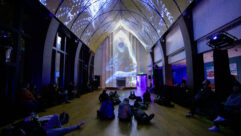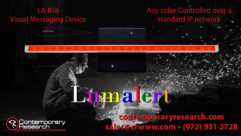Fascinating Facts About Light-Emitting Diodes
Fascinating facts about light-emitting diodes.
- Invention of the light-emitting diode (LED) is usually attributed to four American research groups in 1962, but recent research by Nikolay Zheludev at the University of Southampton has turned up work on the LED by Oleg Vladimirovich Losev published in 1927.
- Losev detailed the LED’s function in 16 papers published between 1924 and 1930, using Einstein’s then new quantum theory to explain how electrons dropping in energy produced light without heat. A letter he wrote Einstein asking for help developing the theory went unanswered.
- Losev died of hunger in 1942 during the blockade of Leningrad.
- A diode is a simple semiconductor. Most diodes are made of silicon, which has four electrons in its outer orbital. Each electron gloms onto each of four neighboring atoms, forming lovely silvery pure crystals that will practically stop the flow of electricity.
- “Doping” the crystals — introducing an impurity —changes an insulator into a conductor. In negative, or N-type, doping, a little phosphorus or arsenic, each with five outer electrons, is added. Four of the five electrons glom onto the four atoms of silicon, but as in musical chairs, the fifth is left unseated. Get a few of these fifth-wheel electrons together and you’ve got a conductor. Positive, or P-type, doping is accomplished by adding a little boron or gallium, each with only three outer electrons. They bond with three of the four silicon atoms, leaving a hole where the fourth pair would be. Holes can conduct current, making P-type silicon also a conductor.
- N-type and P-type silicon aren’t great conductors, however, they’re more “semiconductors.”
- Put N-type and P-type silicon next to one another, hook them up to a battery, and the negative electrons in the N-type are attracted to the positive terminal, while the positive holes in the P-type are drawn to the negative terminal. Result: No current flows between the two halves of the diode.
- Flip the battery and you get repulsion: the N-type’s negative electrons from the negative terminal and the P-type’s positive holes from the positive terminal. At the junction of N-type and P-type however, the fifth-wheel electrons drop into the positive holes, moving from the conduction band to a lower orbital and giving off electromagnetic energy in the form of a photon of light. Then new holes and electrons spring up, more light, etc. Result: Current flows between the two halves of the diode.
- The distance that the electron drops governs the kind of light emitted. A short drop or gap makes the photon’s frequency so low it’s invisible to the human eye. Remote controls use LEDs that emit infrared light (at an 830-nannometer wavelength). The diode’s composition determines the gap and, hence the color. A red light has a wavelength of about 700 nanometers, a blue-violet is about 400 nanometers.
- In visible light-emitting diodes, the light is brighter because gap is greater and because the plastic bulb of the LED concentrates the light in one direction.
- An incandescent light bulb, which heats a filament to create light, gives off only 10 percent of its energy as light, the rest is heat. Almost 100 percent of an LED’s energy is given off as light. The same is true for the process by which a lightning bug produces light.
- Replacing half of all Christmas bulbs with LED bulbs would cut U.S. energy bills by $17 billion annually.
- Kentucky recently switched 77,000 traffic signal modules from incandescent lamps to LEDs. The state estimates it will save $1.7 million from reduced energy costs and $1.5 million in reduced maintenance and lifecycle costs.
Sources: General Electric Company, newscientist.com, howstuffworks.com.










